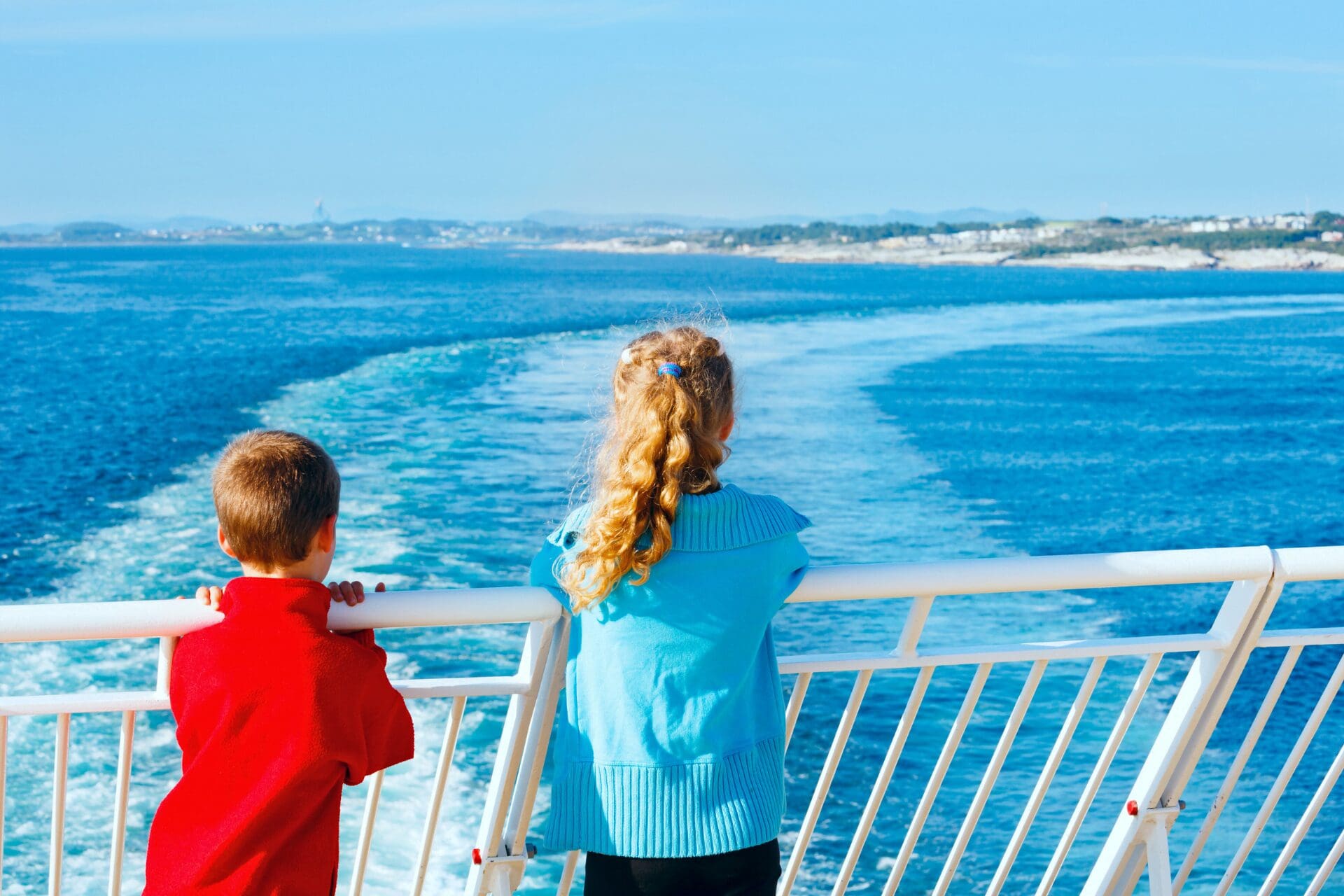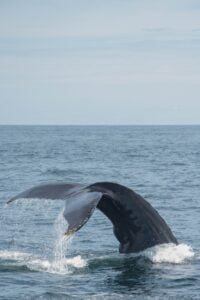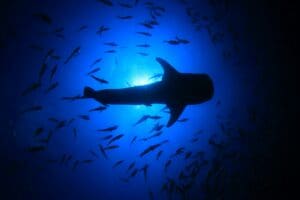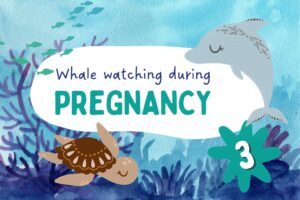Whale Watching with Kids: The Ultimate Guide for Families
Taking your kids whale watching makes for an unforgettable family adventure. Not only is it exciting to see giants of the deep up close, but it’s also a truly educational wildlife experience to build your kids’ appreciation of the ocean.
To ensure your family whale watching trip exceeds expectations while keeping the kids happy and comfortable, use this ultimate guide covering how to prepare properly, choose the right tour, spot whales, and make lasting memories together.
Pick the Right Whale Watching Tour
Choosing the best whale watching tour is key to an enjoyable trip with kids. You want one tailored to families, offering creature comforts to keep the kids content whether whales appear or not.
Focus on Shorter Trips
For young children with limited patience, opt for shorter 2-3 hour tours over lengthier 5-8 hour options better suited to teens and adults. Shorter tours still provide decent whale sighting odds while getting you back to shore before restlessness sets in.
Boston Harbor Cruises’ whale watch stays close to the harbor, lasting just 2.5-3 hours. San Diego Whale Watch’s Family Adventure Cruise similarly sticks to 3 hours for better odds of maintaining kids’ attention spans.
Prioritize Comfort
With unpredictable ocean conditions, having access to heated, enclosed cabins can be a lifesaver for keeping kids comfortable in cold or wet weather. Seeking out tour providers explicitly mentioning such amenities in their trip details helps avoid being stuck outdoors no matter the conditions.
Vancouver Whale Watch’s covered, heated cabin has outdoor access for spotting whales nearby, plus cozy seating, snacks, and hot chocolate inside. San Diego Whale Watch and Portland Spirit similarly tout indoor heated areas as part of their family-friendly focus.
Look for Discounts and Special Perks
With multiple kids’ tickets adding up costs quickly, seek out family discounts where children receive free or reduced rate passage. Equally, tours offering activity sheets, junior naturalist programs, guaranteed sightings policies, or kid-preferred snacks add value beyond just spotting whales.
Out of Harbor Breeze Cruises’ family oriented cruises, the Legacy offers the best kid perks like half-off tickets for ages 4-12 plus whale tale necklaces, tattoos, and a free scoop of ice cream at trip’s end.
Meanwhile, San Diego Whale Watch’s junior naturalist pledge has kids reciting along in their best David Attenborough voices:
Getting your kids engaged with the tour experience boosts their whale watching enjoyment even if mammoth marine creature sightings underwhelm.
Review Safety, Cancellation Policies
With unpredictable little ones and equally unpredictable oceans, understanding tour providers’ policies around cancellations, seasickness, behavior expectations, and other contingencies gives needed peace of mind.
For example, Whale Watching Sydney lets passengers reschedule if whales aren’t sighted on their trip. Boston Harbor Cruises offers seasickness bags for green-gilled guests. Making sure critical policies are clearly communicated ahead of booking helps you pick the right provider for your family.
Getting a handle on what to pack, how to prepare kids for the reality of open ocean trips, and reasonable expectations for sightings also helps reduce surprises down the line.
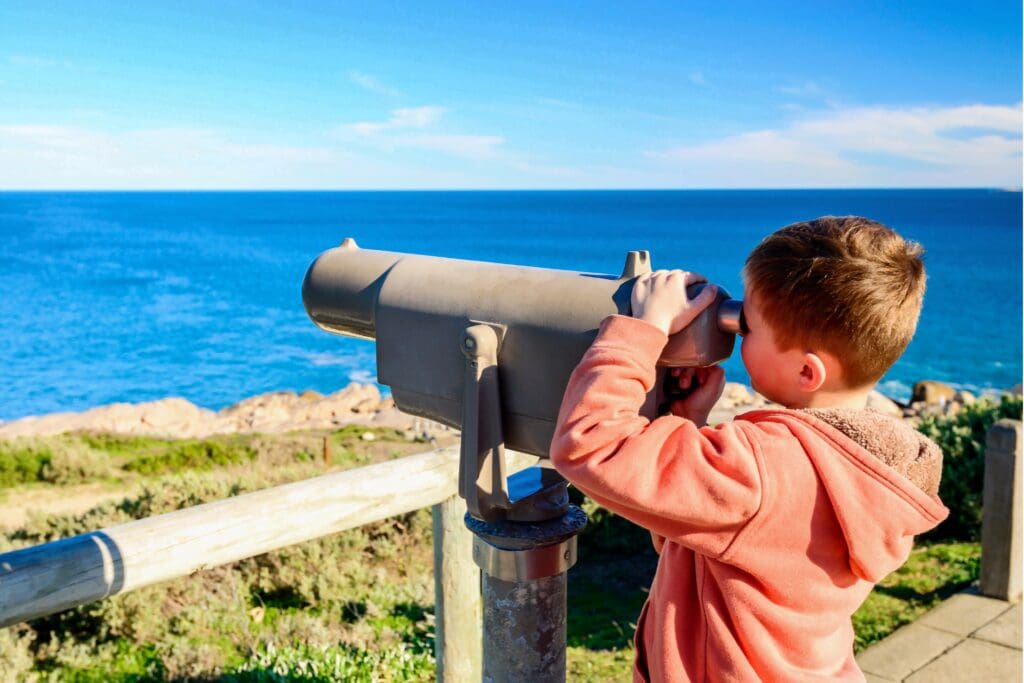
Prepare Properly with Your Kids
Aside from selecting the ideal whale watching tour, proper preparation also hugely impacts how enjoyable the experience will be with kids. From unpacking what to realistically expect to pack essential creature comforts, setting the stage for success with children takes some intentional planning.
Set Realistic Expectations
It’s worth having an honest chat about the reality that despite your best efforts, the family might spend hours scanning the horizon with nary a spout in sight. Whales don’t perform on cue every trip. It’s key to discuss this ahead of time instead of disappointed tantrums erupting mid-voyage.
On average, Pacific Whale Foundation’s Hawaii whale watch guests spot whales on 96% of excursions. In Baja California where blue whales and greys migrate, sighting odds near 100% during peak January-March months.
But certain weather, inherently elusive species like orcas, or just bad luck can spoil hopeful viewings. Making sure kids understand this nuances whale sightings as special bonuses, not guaranteed entertainment, prevents disappointment. Have them think of alternates like onboard games or marine life bingo cards to keep them happily distracted if needed.
Review Boat Safety Rules
A whale watching boat differs hugely from playgrounds and pools kids are used to cavorting in unattended. Have them understand basic vessel safety rules like no running around slippery decks, staying behind rails, or wearing properly fitted life jackets when outside.
Emphasize listening to the captain and guides – it might just save their life if they heed warnings to get back from the bow or secure belongings indoors due to encroaching storms. Setting these behavioral expectations from the outset keeps your time focused on marveling at whales rather than monitoring misbehaving kids.
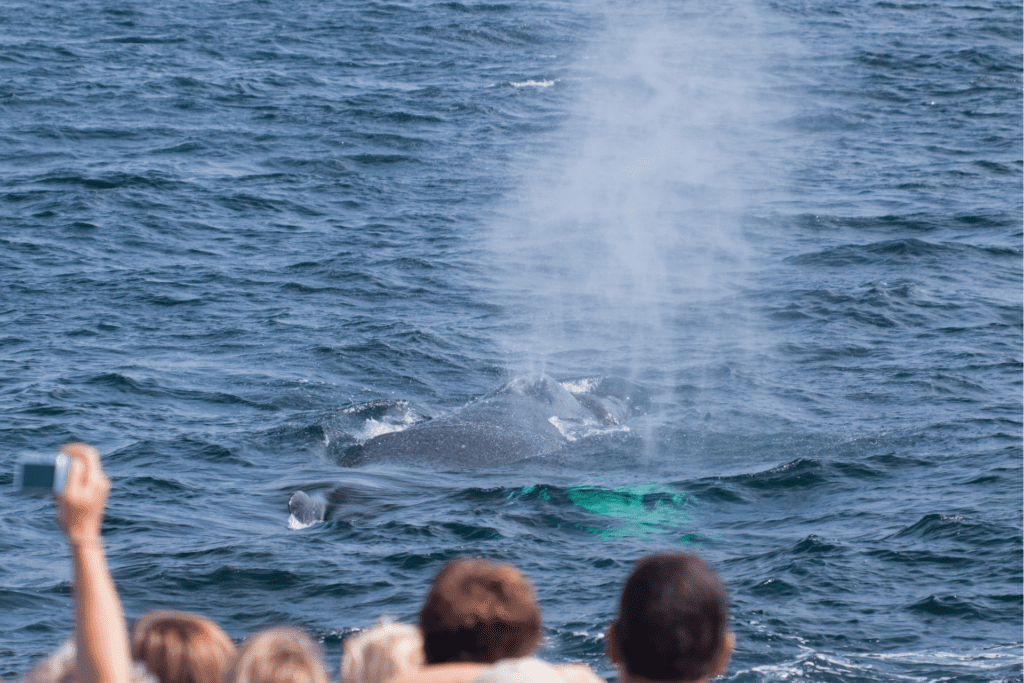
Whale watching with kids Safety tips
Pack Properly
Ensure your whole crew stays cozy and nausea-free by packing key provisions like:
- Warm layers and waterproof rain gear: Even California’s temperate climate brings chill winds and sea spray. Dress kids in easy-on layers with water-repelling outer shells.
- Seasickness remedies: Whether ginger candies, pressure wristbands or over-the-counter meds, come prepared to combat green gills.
- Hydration and snacks: Being out on the open ocean can bring rapid dehydration. Bring refillable bottles and high-energy bites to maintain fuel tanks.
- Cameras/binoculars: Ensure you capture amazing whale moments clearly with long range lenses. Waterproof cameras excel in moist ocean environs.
- Boredom busters: Whether BYO electronics, favorite books and toys, or onboard activity packs, have entertainment options if wildlife or your kids’ attention spans fail to cooperate.
With the right tools on hand to handle anything from boredom to barfing, you’ll stay focused on memories with majestic marine giants instead of mundane parental duties.
Get Them Engaged
Beyond tangibles you pack, also bring along intangibles like your childlike sense of wonder to set kids up for getting the most out of their whale watching adventure.
Foster their innate curiosity by having them:
- Ask engaging questions for naturalists to answer mid-voyage
- Practice identifying whales and wildlife with onboard ID charts
- Listen for telltale blowhole spouts nearby signaling whale friends frolicking
- Use apps like WhaleAlert spotting open ocean species
- Bring junior naturalist worksheets to fill based on cool creatures observed
- Visit onboard gift shops after for educational whale toys and books
Getting kids actively participating from asking smart questions to logging wildlife transforms whale watching from a passive I-spy activity into an immersive quest bound to spark an abiding interest in ocean conservation.
Additional Considerations for Young Kids
While whale watching can be suitable for kids of all ages with the right precautions, taking infants and toddlers does pose extra challenges needing special handling.
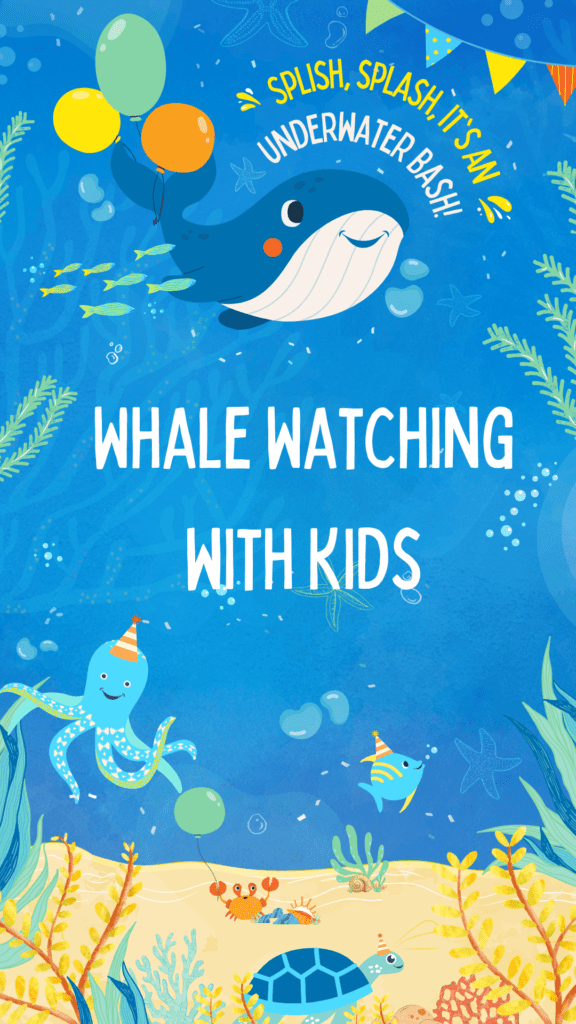
Evaluate Your Toddler’s Temperament
Does your tot even sit through a 30-minute storybook without wriggling off for distractions? Realistically assess your child’s ability to process instructions, remain securely positioned for an extended voyage and not require constant hands-on engagement. Highly active children under 2 years may find even a short 2-3 hour whale watch overly dull.
Equally, if your baby chiefly contacts naps or easily gets overstimulated by loud noises, the throbbing engines and choppy seas could quickly trigger tears instead of wonder. Gauge your infant’s sleep and sensory sensitivity patterns before committing funds to a lengthy tour they may sleep through or cry the entirety of.
Come Prepared for Baby Care Needs
If embarking with a tiny tot, realize you alone bear responsibility for diaper duty, feeding, soothing tears or providing entertainment. Crew have safety obligations, not babysitting whalespotting tykes, so come self-sufficiently stocked for all baby care essentials:
- Pack ample snacks, formula/milk, favorite cups/utensils
- Bring multiple changes of clothes for inevitable messes
- Have toys, books, tablets pre-loaded with shows as distractions
- Ensure you have a baby carrier to keep them corralled securely when navigating slippery deck areas
With your baby care arsenal assembled, you can focus on memory-making instead of the mundane. But accept that babies’ needs trump even a white whale sighting so be willing to take a break from scouring seas to address inevitable meltdowns. If you missed seeing a whale breach, so be it.
Double Up on Precautions
Between slippery decks, biting winds and roving wildlife, boats pose abundantly more hazards for wandering tots than safe play spaces on solid ground. Take extra precautions like:
- Use stroller restraints or baby carriers at all times outside
- Keep toddlers away from rails and monitor closely
- Have kids wear life jackets when outside per US Coast Guard rules
- Protect delicate skin and eyes with hats, shades, sunscreen
- Dress in snug fitting layers that won’t loosen mid-voyage
Take to heart the flight attendant wisdom to secure your own oxygen mask before assisting others. Address your baby’s needs first before racing to glimpse whales. If your infant won’t tolerate a bulky life vest or repeatedly tries tearing free of restraints, whale watching may exceed their adventure readiness for now. Some battles just aren’t worth choosing.
Tips for Spotting Whales
As Dr. Seuss’ iconic Lorax advises: “If you want to catch beasts, you don’t see with your eyes. You see with your mind.”
Spotting elusive whales amidst choppy seas and intermittent spouts takes equal parts strategy, technology, and a touch of luck when traveling with kids.
Seek Out Whale Hotspots
Position your crew where whales are most likely to materialize using tips from seasoned naturalists. Humpbacks most often materialize off a vessel’s bow due to acoustic distortion of propeller noise they avoid.
Breeching behaviors drawing attention happen nearer islands and feeding grounds rich with krill swarms. Consult guides on optimal viewing spots as conditions and location dictate rather than relying on fixed assumptions. Staying right below the captain’s wheelhouse also affords prime 360 degree sightlines to spy spouts.
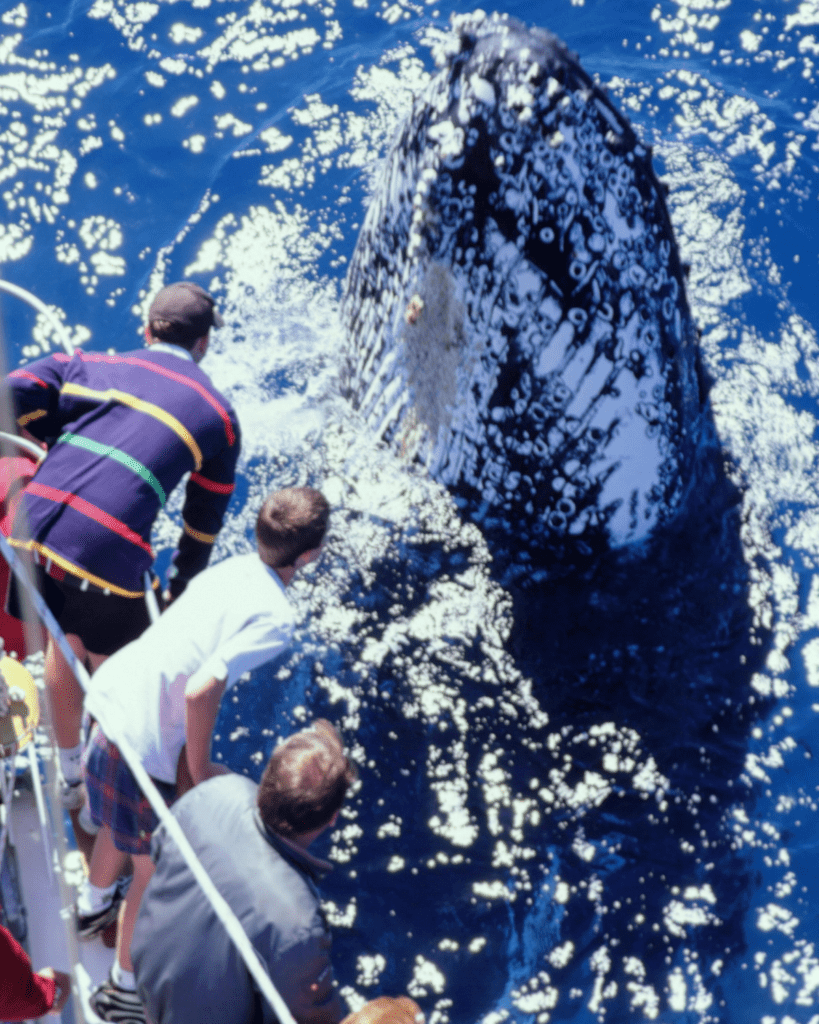
Use Tools Advantageously
A keen naked eye may occasionally distinguish a distant blowhole burst. But catching more guaranteed glimpses of whale tails, breach displays and lobtails takes advantage of optics.
Provide kids turns with binoculars and long telephoto camera lenses you BYO or borrow from onboard libraries. Using stabilizing monopods cuts jittery captures.
Equally, reference waterproof wildlife ID spotter cards, onboard charts of recent sightings, and map apps like WhaleAlert tracking tagged whales’ real-time locations. Leveraging multiple tools gives kids better nderstanding of giant marine mammal whereabouts.
Enlist All Lookouts on Deck
Craning over tumultuous seas for hours strains necks and patience limits. Ensure your crew casts sightlines across all directions to multiply odds of spotting spouts.
Have kids call out “thar she blows” any time they spy a suspect spray. False positives still keep them actively engaged. With multiple spotters scanning the seas, visibility dramatically improves to catch whale magic moments before they dive into the depths.
Make Memories Together
In the unlikely but highly frustrating event inclement weather or rare no-show whales cut your trip short, fall back on onboard activities specially tailored to foster shared memories despite less than ideal conditions.
Connect Them with Nature
If nothing else, leverage unexpected downtime as a teaching opportunity for curious minds. Discuss finding gratitude just to be out on the salty seas air together away from school and screens.
Have naturalist guides field questions on whale migration habits, breach behaviors, and cetacean conservation challenges to spark their burgeoning marine stewardship. Present options to adopt local whales or symbolically sponsor research projects protecting vulnerable giants. Use any extended time sans actual giants productively furthering their connection with nature.
Capture Lasting Moments
Should spectacular sights unfold, memorialize magical moments amidst the action with lasting mementos. Capture that first breaching glimpse in a quick selfie with windswept hair and triumphant smiles.
Record funny clips recounting sightings to replay later rather than relying on fallible short term memories. Sketch cartoony interpretations of oddly shaped humpbacks bumping by or collect naturalist certificates adding gravitas to their one-of-a-kind encounter.
Gift Whale Keepsakes
After disembarking back on solid ground, make a beeline to he gift shop. Here, let kids commemorate their incredible experience through keepsakes like plush whales, badge covered vests, or collectible souvenir mugs.
Pick up a copy of the SOS Save our Seas children’s book benefiting the Whale Museum’s conservation efforts. Let them snuggle the story each night, remembering friends from the deep now ambassadors for combating oceanic threats.
Whale Watching Tour Comparison Table
| Tour Operator | Location | Tour Length | Indoor Cabin? | Kid <br>Discount? | Kid Activity Extras |
|---|---|---|---|---|---|
| Boston Harbor Cruises | Boston, MA | 2.5-3 hours | No | Child 3-11 40% off | Scavenger hunt checklist |
| San Diego Whale Watch | San Diego, CA | 3 hours | Yes - heated | 50% off ages 3-12 | Junior naturalist pledge |
| Vancouver Whale Watch | Vancouver, BC | 5-6 hours | Yes - covered/heated | Kids under 12 50% off | N/A |
| Harbor Breeze Cruises | Long Beach, CA | 2.5 hours | No | Ages 4-12 50% off | Whale tattoos, necklaces, ice cream |
Final Thoughts
While whale watching with kids holds no guarantees you’ll cement life long bonds glimpsing giant marine mammals, the right preparation and expectations hugely stack the odds in your favor. Scout tours catering specifically to families, supply ample distraction buffers should sightings disappoint, and foster their innate curiosity in conservation causes and you’re bound to net an unforgettable experience together.

